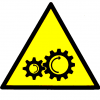FPGA FIFO performance: width vs. depth
-
Similar Content
-
- 0 replies
- 66 views
-
How and where to change the number to compile at the same time in LabVIEW FPGA 19.0?
By RJ X,
- fpga compile worker
- flexrio
- (and 1 more)
- 1 reply
- 1,385 views
-
- 4 replies
- 2,559 views
-
properties/methods for a serial port in FPGA: how to assign the port?
By Jerzy Tarasiuk,
- fpga
- serial port
- (and 2 more)
- 21 replies
- 6,968 views
-
- 28 replies
- 15,683 views
-







Recommended Posts
Join the conversation
You can post now and register later. If you have an account, sign in now to post with your account.